Workbench and chat
Supply chain order procurement & messaging
LDNA is a robust inventory and order tracking tool, built to provide manufacturers and their suppliers, transparency on current status and project months into the future within reasonable certainty. Inside is WB, an execution based workflow allowing buyers to correspond with their internal team and suppliers on setting and confirming commit dates for POs.
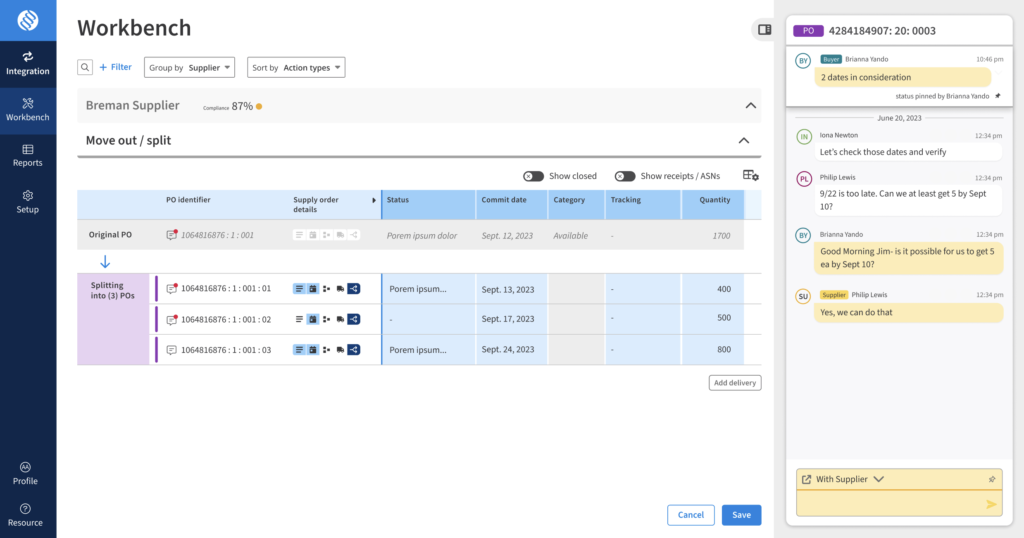
User feedback
Buyers wanted suppliers to see the exact fields they were referencing so they could understand what was important to the buyer, even for a new supplier who was still on-boarding to the tool. Planners and the managers of the buyers also were consistently bombarding the buyer with requests to relay to the suppliers.
The problem
Buyers constantly "put out fires" directed from their planners and had to work in a spreadsheet-like workflow that is too complex to correspond with suppliers. Buyers and suppliers also emailed or used phone calls that were inconsistent to reference, pulled users out of LDNA, and created delay in answering questions.
The solution
At the core of the process, commit dates had to be agreed upon. Workbench could provide this field for both users to see, simultaneously, and reference on their workflow, called "Workbench". Other fields were identified to be important from the buyer/supplier, but those features would get their own release in the future backlog. Chat was a simple solution to keep users in LDNA and feature 1.0 had many bells and whistles. Future chat will have approve/reject workflows to quicken the response on a date.
User research
Primarily, two users (buyers and suppliers) were seen as the main benefactors of Workbench. However, purchasing planners were also needing an improved workflow to resolve inventory shortages and transparency with manufacturing assembly schedules. Supply chain managers for companies echoed similar needs of the users. This lead the way for another planner version of WB.
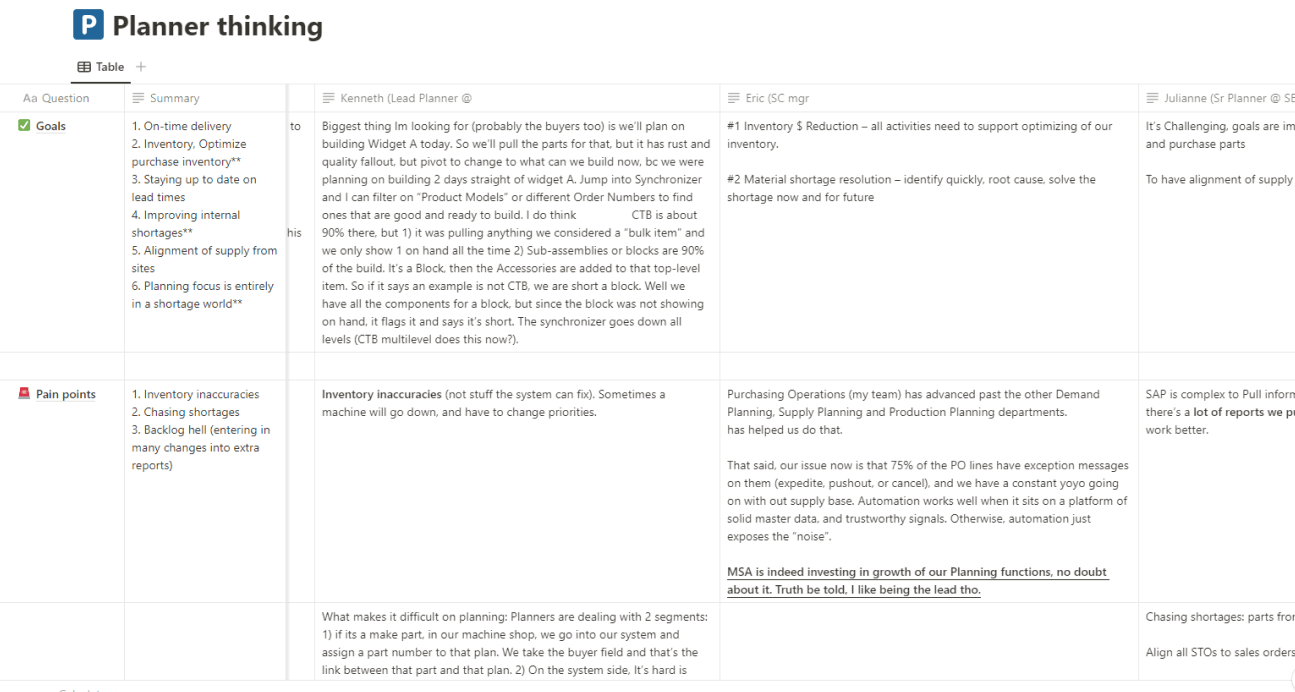
Use cases
Each use case was built-out in enhanced wireframes and reviewed among the team. This helped identify consistencies, redundant elements and actually helped drive re-writing some of the tabbed menus.

Chat + Workbench
Users traditionally used email and phone calls, which pulled them away from their order screens and captured inconsistent tracking of commitments, etc. The idea of chat was appealing to buyers who could quickly reference any PO in the table and chat directly with other internal team or select a “supplier” channel to resolve commit dates with them directly. Suppliers had their own view of WB. Chat provided the paper trail of every change better than emails and cut down on repeated phone calls.
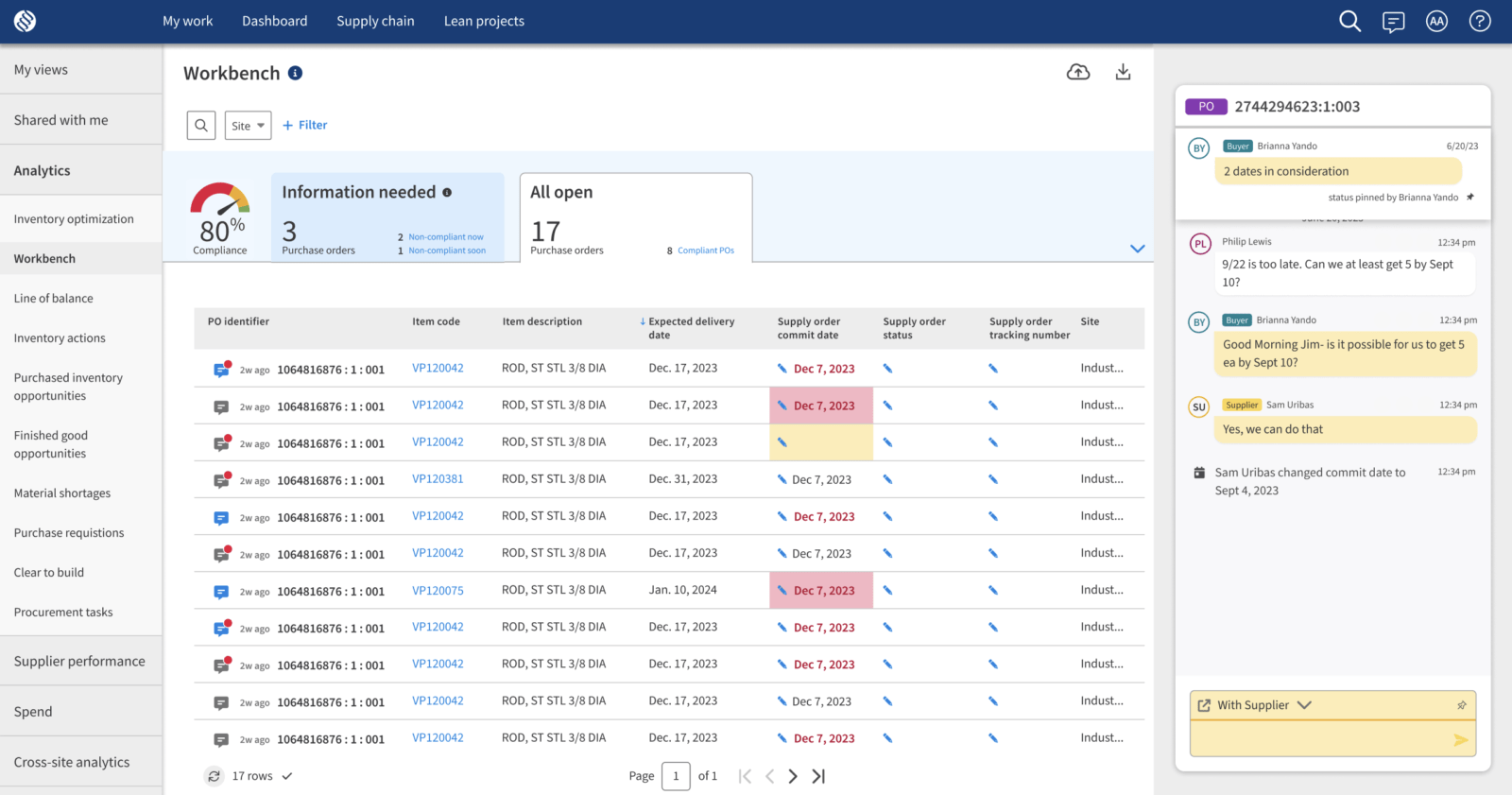
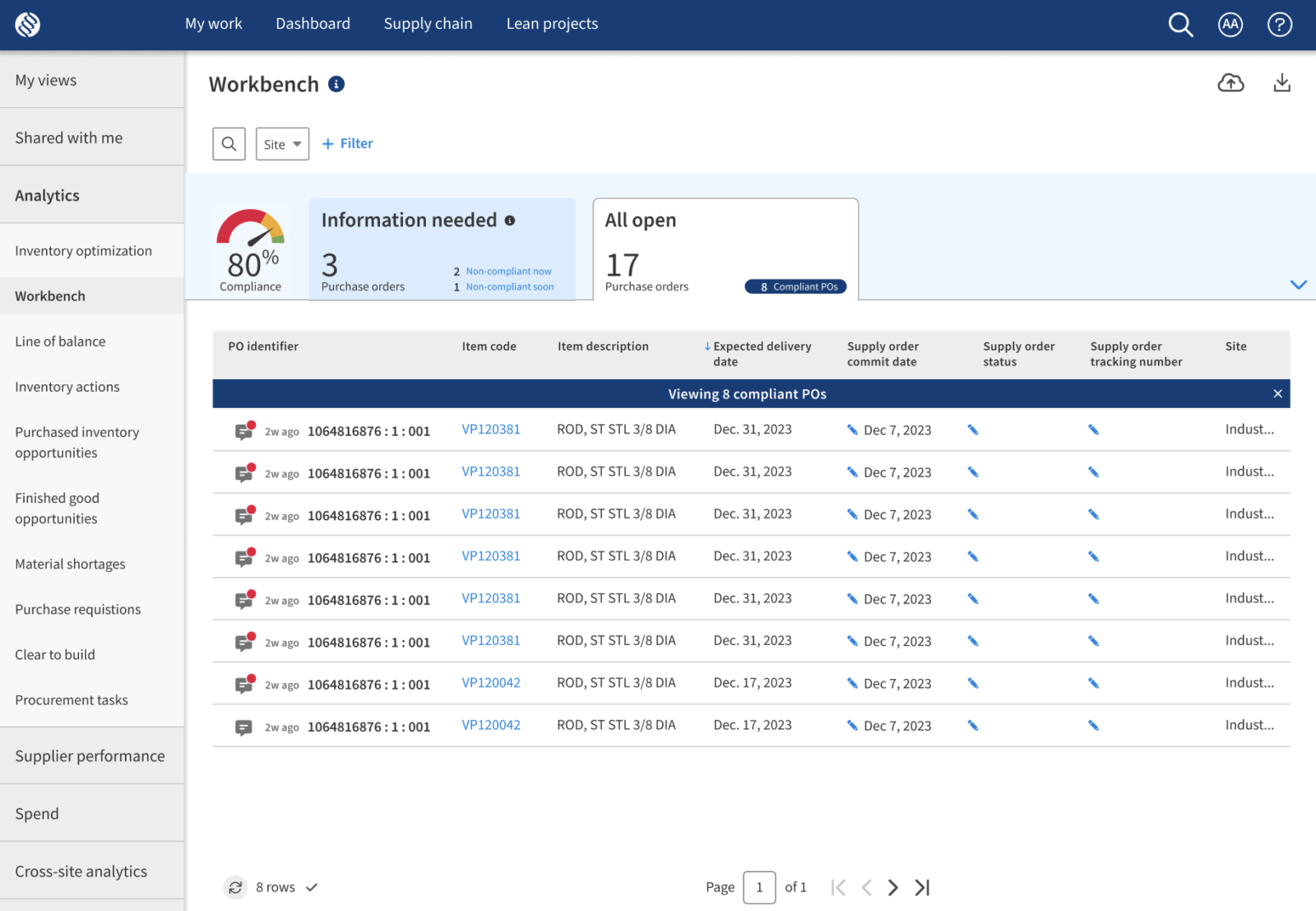
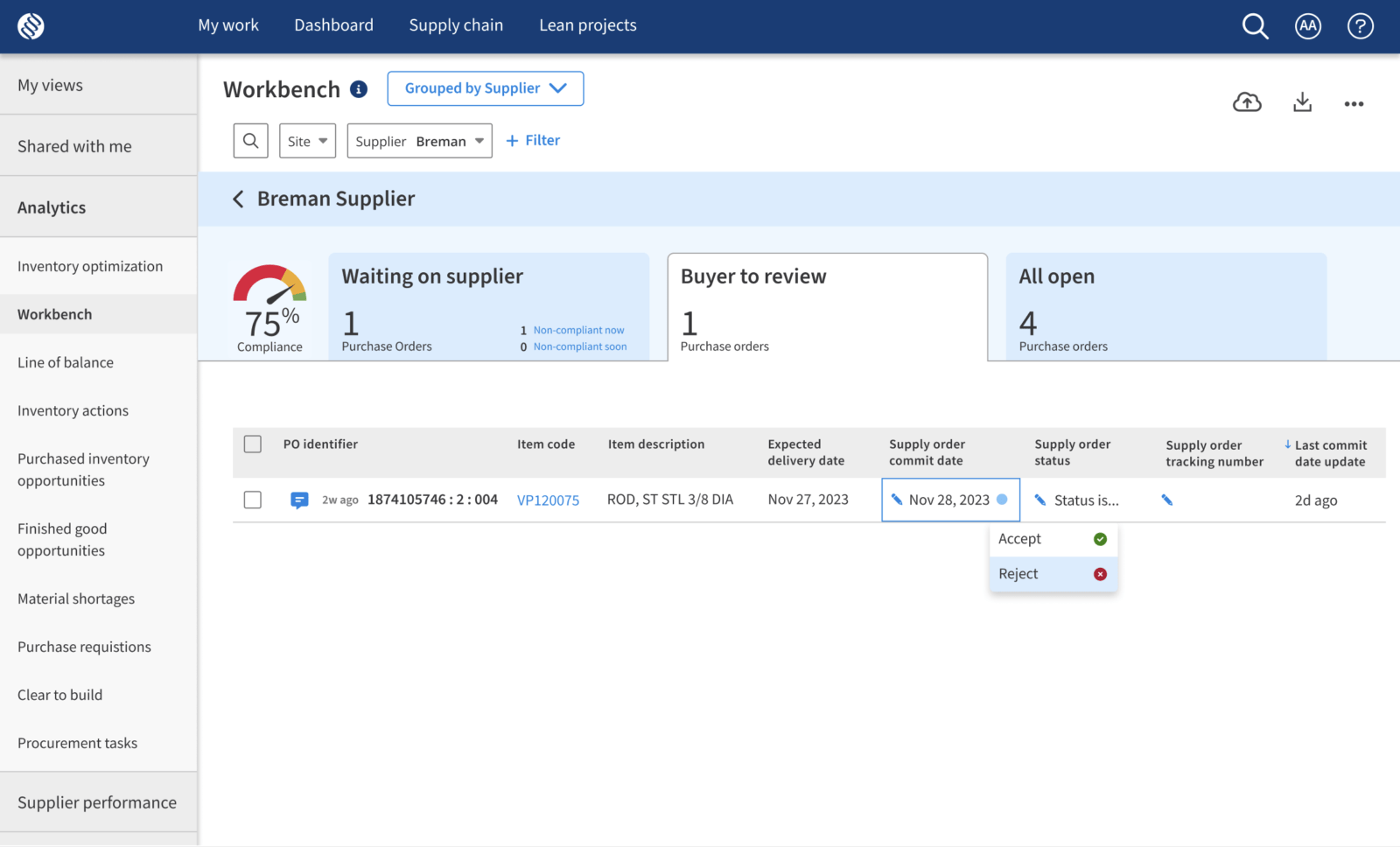
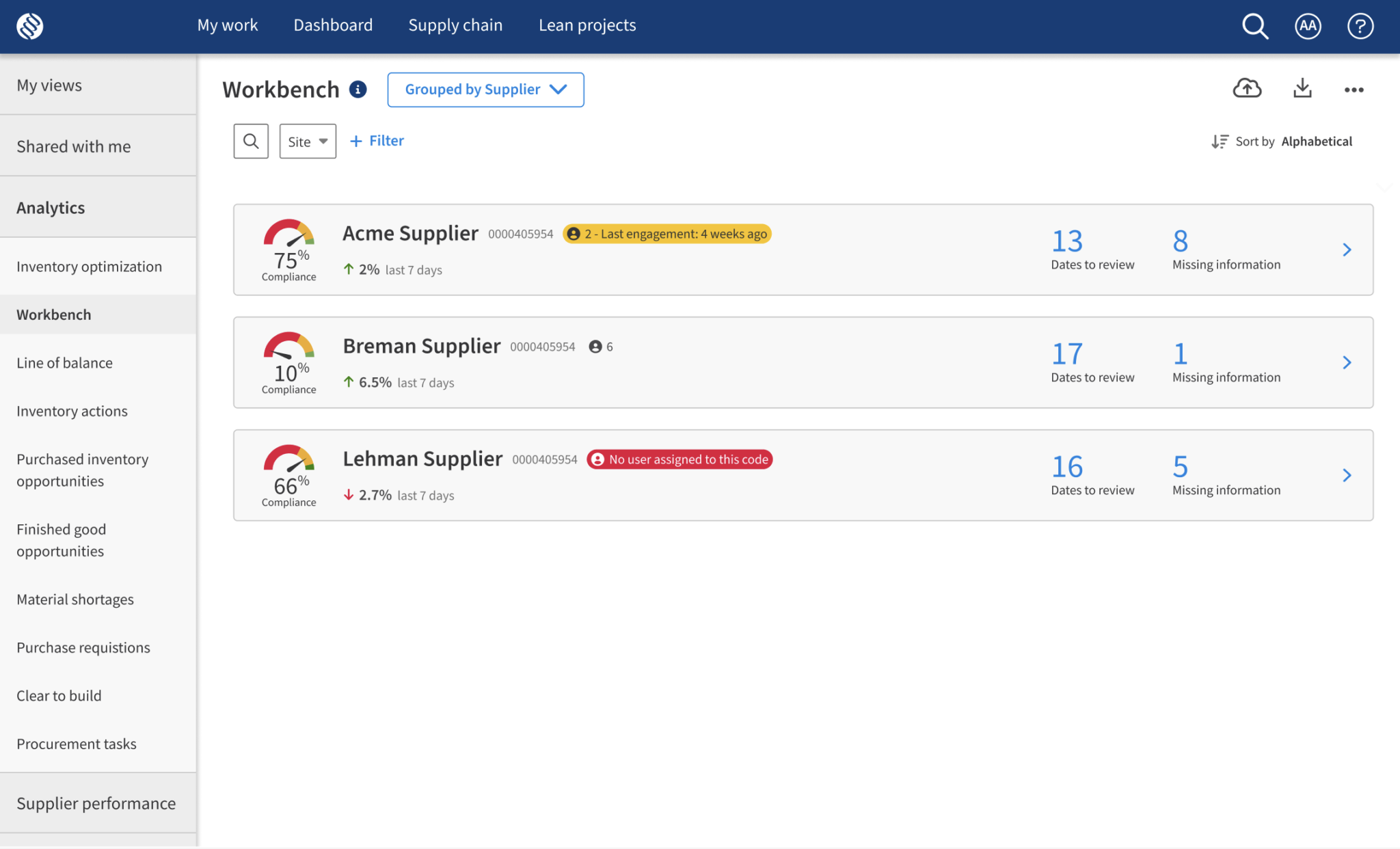
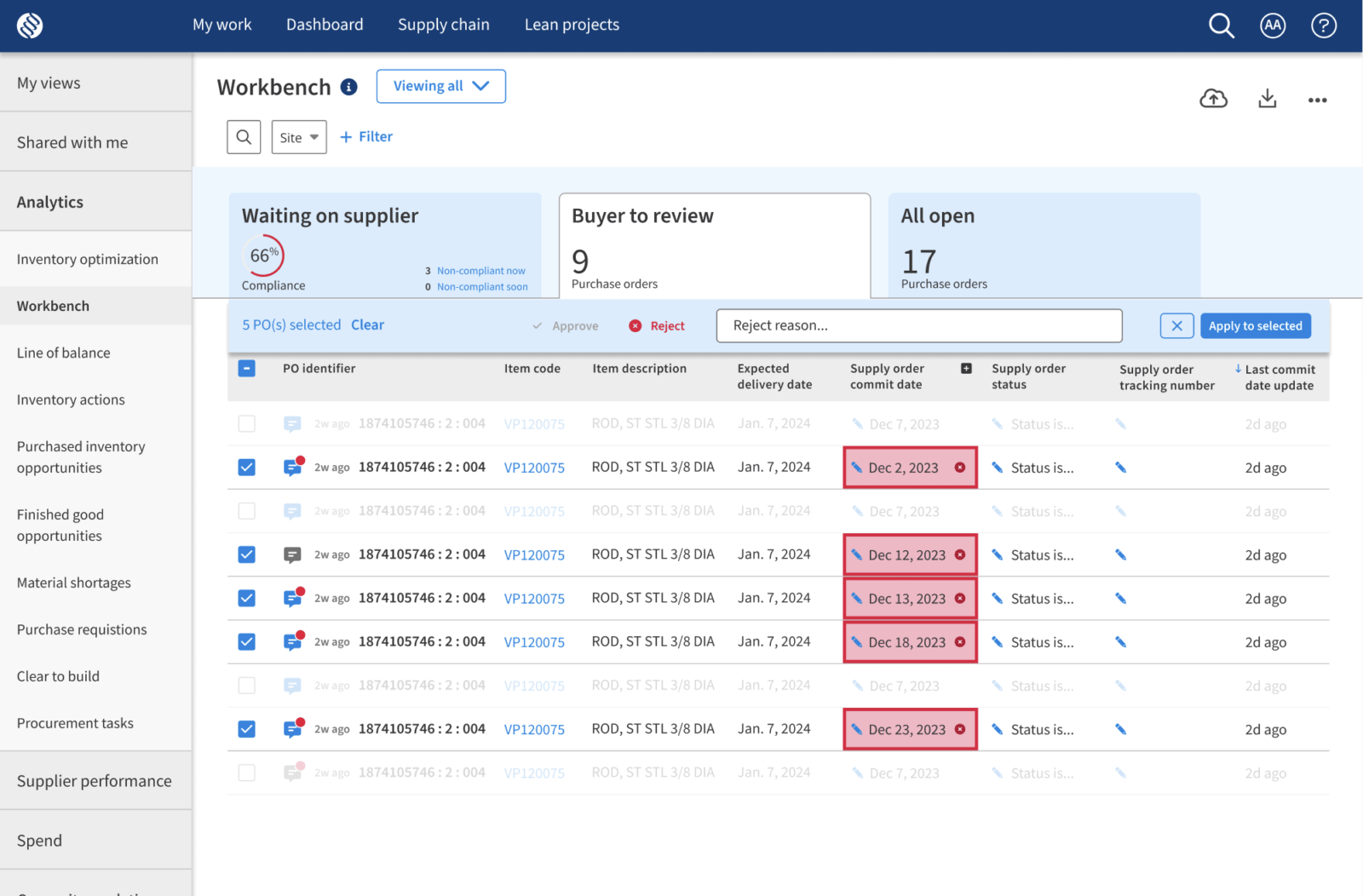
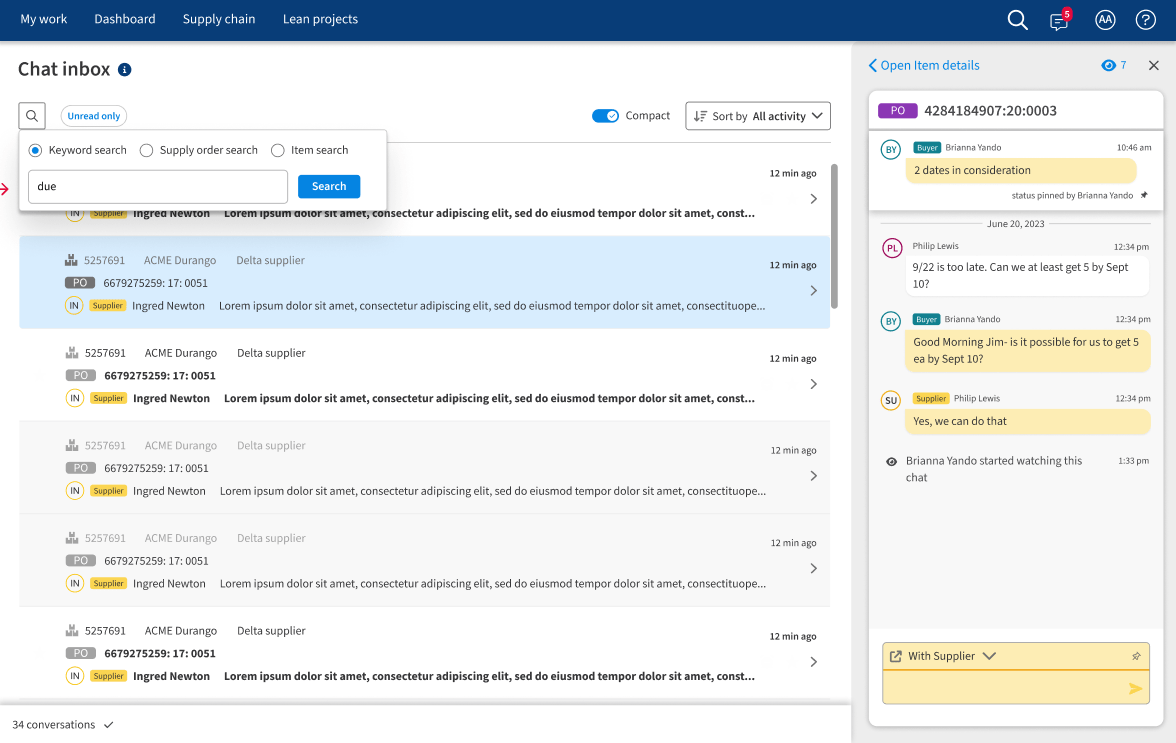
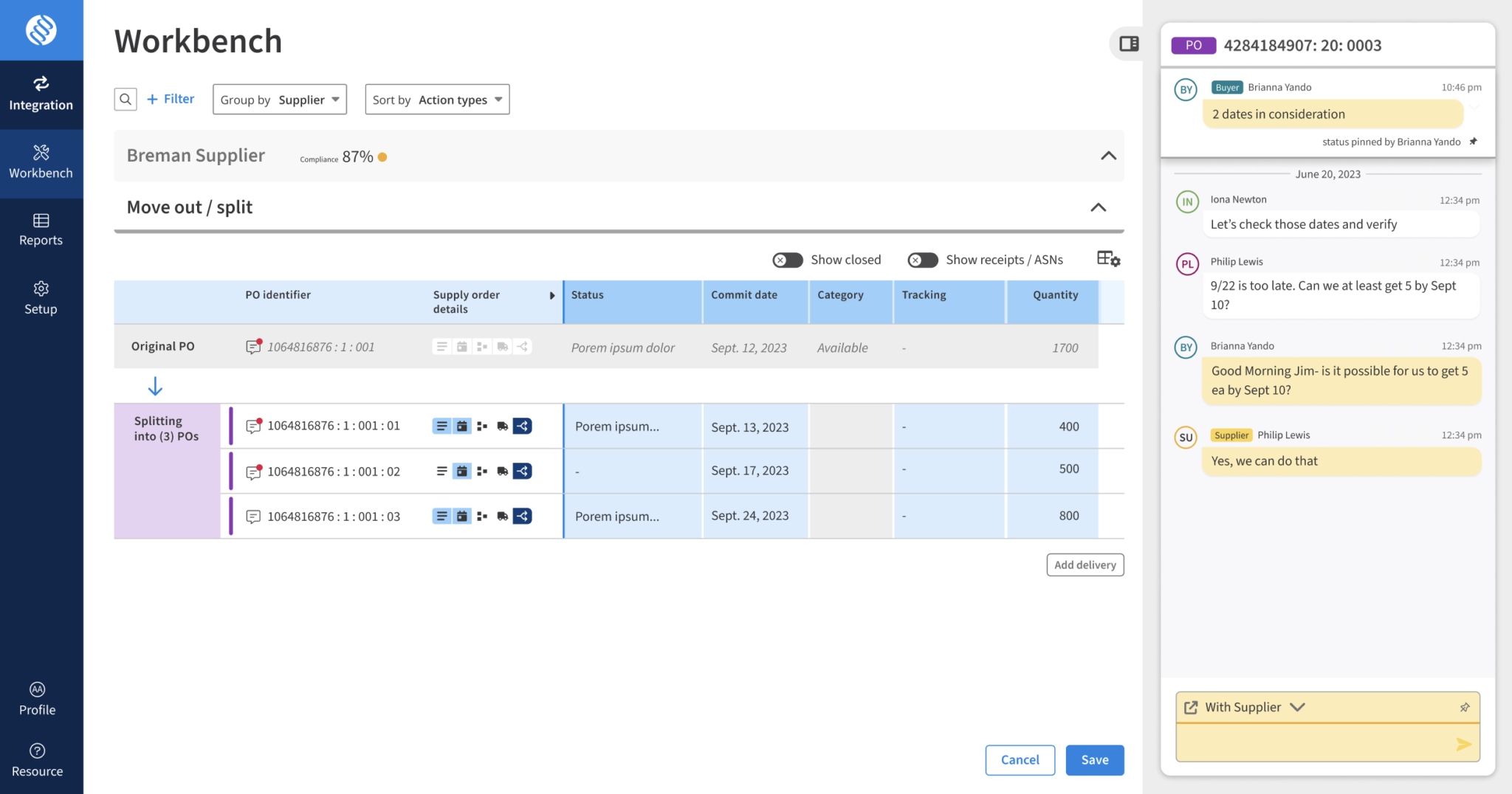
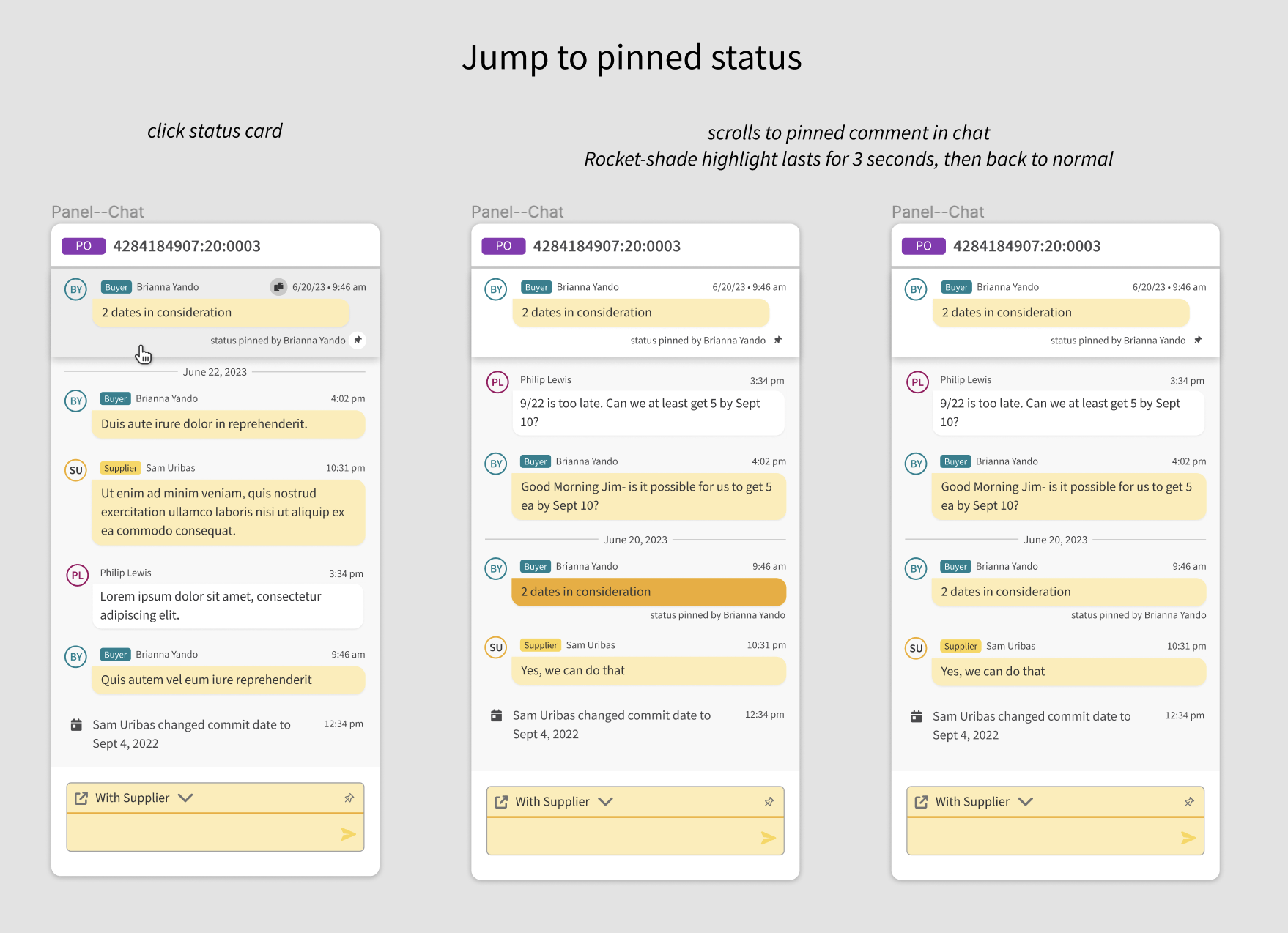
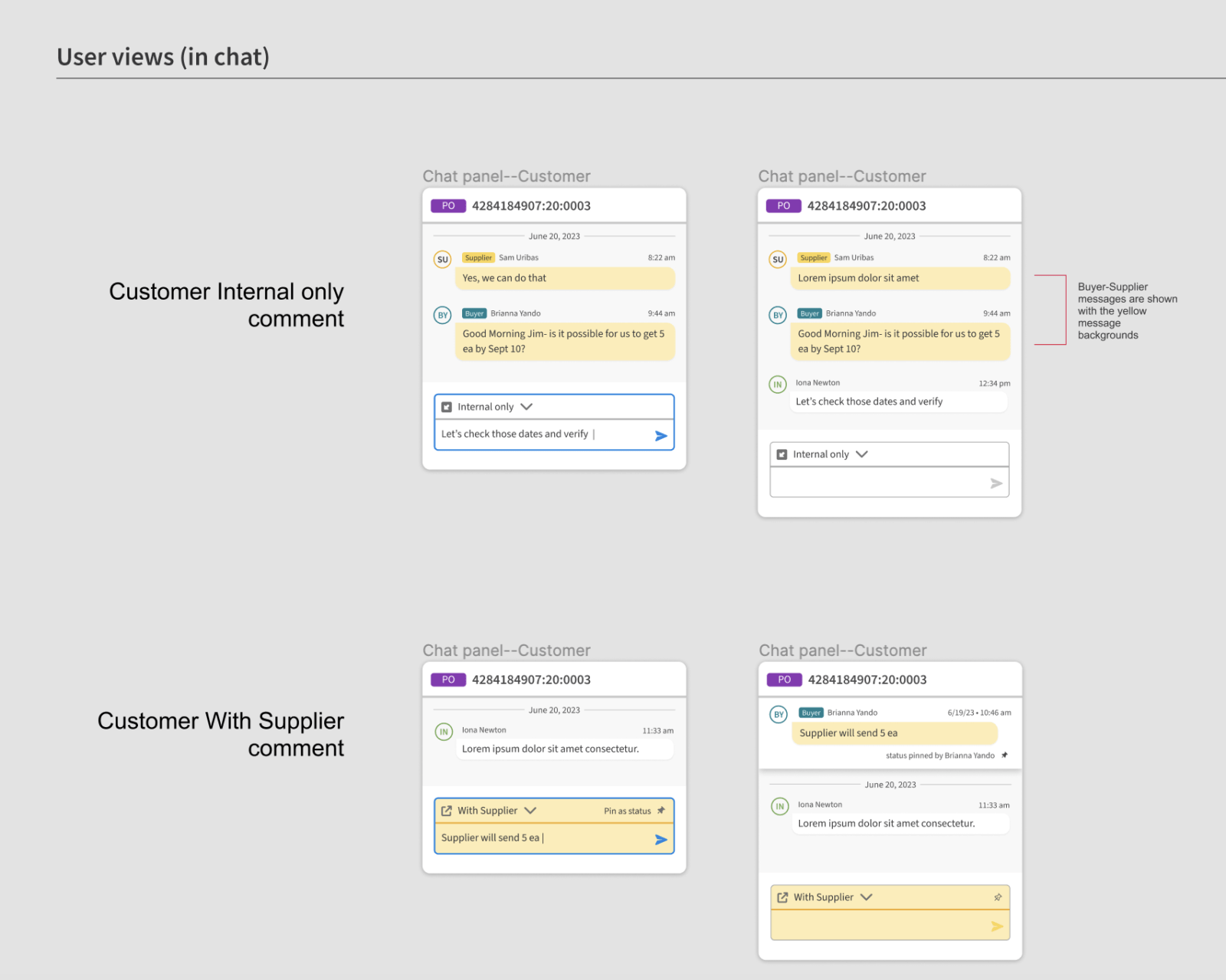
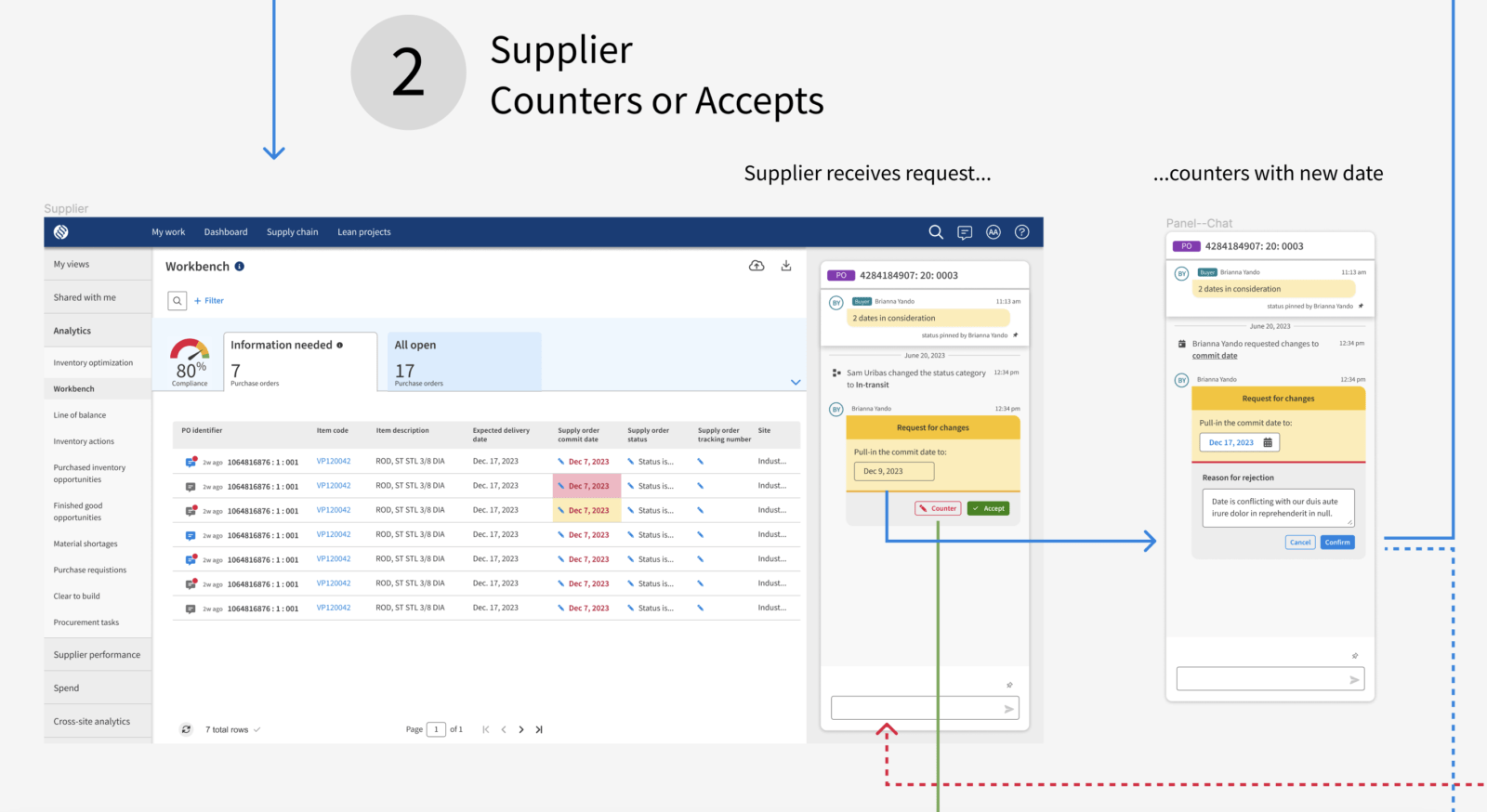
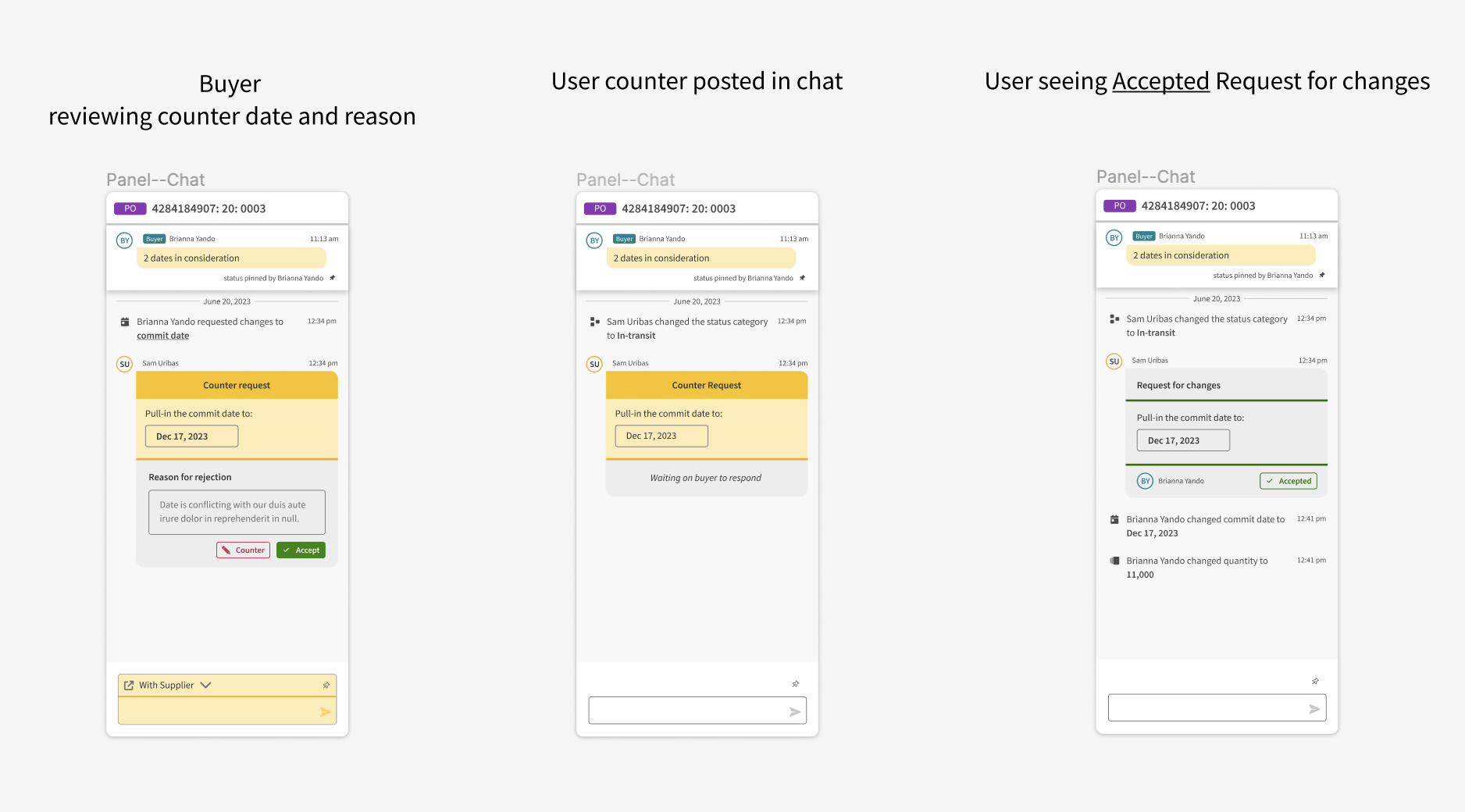
My role
Soon after joining LDNA, I was assigned what became Workbench and chat, on which I was the only UX Designer. I was involved early and often first with CSMs, a PM and our VP of Design with some initial ideas. Then continued the research and design of the first 6 releases for each product.
Activities
User persona contribution, remote user interviews, designed user flows, wireframes, use-case validation, prototypes, hi-fi designs, usability testing, development reviews
Stakeholders
1 Product Designer (me)
1 VP of Technology
1 Project Manager
2 Quality Assurance testers
1 Development Manager
1 Front end Developer
1 Back end Developer
Results
- Workbench became first execution flow for buyers/suppliers and simplified user focus
- Assisted in uncovering a new user persona for future workbench, currently not in the product
- Chat integration improved buyer-supplier communication with EA client and provided transparency for supply chain managers and their customers
